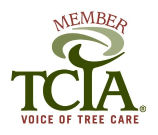
Effective Stump Removal for a Cleaner, Safer Landscape
Tree stumps left behind after tree removal can be unsightly and even hazardous to your property. Whether they are creating an obstruction in your yard or affecting your landscape’s overall health, prompt stump removal is essential. In Dallas, TX, where lawns and outdoor spaces are highly valued, stump removal services can enhance both the safety and appearance of your property.
At TreeNewal, we specialize in safe, efficient stump removal services that leave your landscape clean and clear. Whether you are looking to remove a single stump or clear an entire area, we provide expert solutions that fit your needs. On this page, we’ll explore the challenges and importance of stump removal, and how TreeNewal can assist you.
The Importance of Stump Removal
Leaving a stump behind after tree removal might seem harmless, but it can lead to a variety of problems. Over time, a stump can become a breeding ground for pests such as termites, ants, or beetles, which may eventually spread to other healthy trees or structures on your property. Stumps also pose safety risks, especially in high-traffic areas where they can cause tripping hazards for children, guests, or pets.
Moreover, stumps left untreated can interfere with your landscaping plans. They limit the use of your yard by preventing new planting or outdoor features, such as patios or walkways. Even if you manage to work around them, they can still be an eyesore, detracting from the overall beauty of your property.
Stump removal is a crucial part of maintaining a healthy and aesthetically pleasing landscape. It ensures that potential risks are eliminated, while also giving you the freedom to redesign or maximize the use of your outdoor spaces.
Common Issues With Tree Stumps
There are several issues that can arise from leaving a tree stump in place. One of the most significant problems is that stumps can decay over time, becoming soft and weak. This decaying process attracts pests like termites, carpenter ants, and beetles, which not only infest the stump but can also spread to your home or other trees on your property. Insects are often drawn to rotting wood, and what starts as a minor nuisance can quickly become a costly infestation.
Another issue is that tree stumps can cause regrowth. Without proper stump removal, the root system may still be active, leading to unwanted sprouts around the stump. These sprouts can be unsightly and drain nutrients from the soil, which could be better used by nearby plants or grass. In some cases, this regrowth may even require herbicide treatments to fully stop the process.
Lastly, tree stumps take up valuable space in your yard. Whether you want to expand your garden, install a deck, or simply have a clean, open lawn, stumps can be an obstacle that hinders your plans. The presence of a stump can also lower the overall value of your property, especially if it becomes overgrown or decayed over time.
Issues Faced with Tree Stump Removals in Dallas, TX
In Dallas, TX, stump removal presents unique challenges due to the region’s clay-rich soil and the often dense, deep root systems of local tree species. The heavy clay soil makes digging out stumps more labor-intensive, and the wide, spread-out roots of trees like live oaks can complicate the removal process. Additionally, large stumps from mature trees may require specialized equipment to remove them entirely without damaging surrounding areas.
The climate in Dallas can also affect stump removal. Dry, compacted soil during the hot summer months can make the removal process more difficult, while rainy periods may make the ground too soft, complicating the work. Timing your stump removal to the right conditions can be critical for ensuring successful removal.
TreeNewal’s experienced team understands the specific challenges posed by the Dallas environment. We use advanced equipment and methods tailored to the region’s conditions, ensuring that your stumps are removed efficiently and safely, regardless of the weather or soil type.
TreeNewal’s Stump Removal and Other Tree Services
At TreeNewal, we offer a wide range of services designed to help you maintain a safe and beautiful landscape, especially when dealing with the challenges of stump removal and tree care. Whether it’s before, during, or after tree removal, our certified arborists are here to provide solutions that protect your property and promote healthy tree growth. Here’s how we can assist you:
- AirSpade and Aeration Services: Our AirSpade technology loosens compacted soil around tree roots, improving airflow and water absorption. This service is crucial for trees impacted by nearby stump removal or construction activities.
- Disease & Fungus Management: We identify and treat fungal infections or diseases that may arise due to leftover stumps or decaying wood. Early treatment prevents the spread of disease to other healthy trees in your yard.
- Emergency Tree Services: If a tree or stump becomes a hazard after removal or during construction, we provide emergency response services. This ensures the safety of your property and prevents further damage.
- Insect Management: Decaying stumps often attract harmful pests like termites and beetles. Our insect management services address these issues before they spread to other trees or structures on your property.
- ISA Certified Arborist Consultation: Our certified arborists offer expert advice on tree care and stump removal strategies. This ensures that your landscape remains healthy and that any tree work is conducted safely and efficiently.
- Pro-Active Construction Solutions: We work alongside construction teams to ensure your trees are protected during nearby stump removal or building projects. We establish Tree Protection Zones and provide ongoing monitoring to reduce damage risks.
- Soil Conditioning: After stump removal, soil quality can be affected. Our soil conditioning services restore nutrients and improve soil structure, allowing the remaining trees and plants to thrive.
- Stump Removal Service: We provide efficient and safe stump removal services, including grinding and full stump extraction. This clears your property of unsightly stumps and makes way for new landscaping opportunities.
- Tree Mitigation: If stump removal requires the removal of other nearby trees, we offer tree mitigation services to meet local regulations. We can help replant trees to replace those lost during the process.
- Tree Nutrition & Fertilization: To promote recovery and health after stump removal or construction, we offer tailored fertilization programs. These treatments ensure that the surrounding trees receive the nutrients they need to continue growing strong.
- Tree Pruning Service: Proper pruning of trees near stumps or construction sites is essential for maintaining tree health. Our team prunes to improve structure and remove any dead or weakened branches.
- Tree Removal Service: If a tree is dead, dying, or posing a threat, our expert removal services ensure it’s safely taken down. We carefully plan and execute tree removals, including stump extraction when necessary.
- Tree Surveys: Our tree surveys help assess the health of your trees before starting any stump removal or construction project. This ensures we develop a proactive plan to preserve the trees that matter most to you.
- Tree Trimming Service: Regular tree trimming helps maintain the health and aesthetics of trees near stumps or construction zones. Our trimming services ensure your trees are balanced, safe, and free of overgrown branches.
With TreeNewal’s extensive tree care and stump removal services, you can trust us to keep your landscape healthy, safe, and beautiful.
Reasons For Removal Include:
Damage To
Utility Wires
Destruction Of
Property & Vehicles
Fire
Hazard
Insect
Infestation
Overcrowding
Of Smaller Trees
Legal
Liability
Pedestrian
Injury
Contamination Of
Tree Diseases & Fungus
To Other Trees
Safety Is Top Priority
In both tree trimming and tree removal, TreeNewal’s top priority is safety. Following safety practices and standards is extremely important for our employees and our clients, and their property. Proper International Society of Arboriculture (ISA) regulation techniques and safety standards are adhered to at all times.
Ready For A Quote?
Click the button below to contact us and get started taking care of your trees.
Contact TreeNewal for Stump Removal in Dallas, TX
Ready to clear your landscape and make the most of your outdoor spaces? Contact us today at (817) 329-2450 or fill out the form below to schedule a consultation or learn more about our expert stump removal services. TreeNewal is here to help keep your property safe, beautiful, and stump-free!










